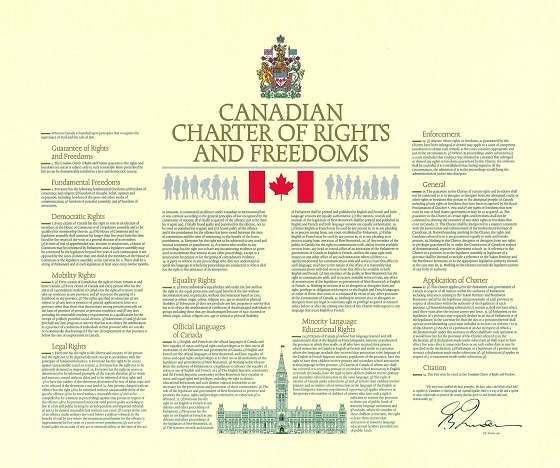Brownstone Institute
EU Digital Identity Wallet Pilots Roll Out Under the Radar

From the Brownstone Institute
BY
As 2023 continues, the European Commission appears busy developing and running pilots for its EU Digital Identity Wallet (EUDI), which it intends to make available to all EU citizens in the near future. But while the European Commission (EC) boasts the prospective EUDI’s convenience, security, and wide range of prospective use cases in daily life, what’s less discussed is the tool’s potential for a bevy of ethical and surveillance-related issues.
What is the EU Digital Identity Wallet (EUDI)?
The EU Digital Wallet, often referred to as the EU Digital Identity Wallet (EUDI), is slated to be offered to the European public in the years ahead. According to the European Commission, “EU Digital Identity Wallets are personal digital wallets allowing citizens to digitally identify themselves, store and manage identity data and official documents in electronic format. These may include a driving licence, medical prescriptions or education qualifications.”
As legislation streamlining their slated use across Europe is finalized, the European Commission is advancing its efforts to roll out EUDIs amongst the general European public, where over 250 private corporations and public authorities are participating in four large-scale pilot projects. At the time of writing, the EU has invested €46 million into these pilots.
Indeed, a wide range of use cases are already being tested in the EUDI pilot projects. These include using the wallets to access government services, register, and activate SIM cards for mobile network services, sign contracts, facilitate travel, and present educational credentials. All together, these use cases suggest the Digital Identity Wallets’ prospective utilization across a wide range of services essential to daily life.
Convenience, But for Whom?
The European Commission frequently plays up the digital wallet’s convenience, with messaging boasting that users will be able to use the Wallets to check into hotels, file tax returns, rent cars, and securely open bank accounts. European Commission President Ursula von der Leyen highlighted the following in a 2020 State of the Union address, where she proposed the concept of a “secure European e-identity:”
Every time an App or website asks us to create a new digital identity or to easily log on via a big platform, we have no idea what happens to our data in reality. That is why the Commission will propose a secure European e-identity. One that we trust and that any citizen can use anywhere in Europe to do anything from paying your taxes to renting a bicycle. A technology where we can control ourselves what data is used and how.
Certainly, von der Leyen is correct that “we have no idea what happens to our data” when we create online accounts or log in to private services, positing that Digital ID can work to solve a core problem many people have when using the internet.
But critically, the European “e-identity,” and digital identification methods generally, pose a bevy of new issues for civilians in both the short and long term. Namely, while Digital ID can provide users access to services, a 2018 WEF report on Digital ID admits the tool’s propensity to exclude; “[f]or individuals, [verifiable IDs] open up (or close off) the digital world, with its jobs, political activities, education, financial services, healthcare and more.”
And indeed, within the control of a corrupted state or other governance structures, Digital ID’s propensity to “close off” the digital world appears ripe for misuse or abuse. Researcher Eve Hayes de Kalaf, for example, writes in the Conversation that “states can weaponise internationally sponsored ID systems” against vulnerable populations. She highlights an example from the Dominican Republic, where long-term discrimination against Haitian-descended persons manifested in the stripping of their Dominican nationality in 2013, rendering them stateless.
Meanwhile, it’s not difficult to imagine others falling through the digital “cracks” as Digital ID systems become mainstream and interconnected with, if not a prerequisite for, accessing critical social and financial services and supports.
As Jeremy Loffredo and Max Blumenthal elucidate in 2021 reporting for the Grayzone, for example, the 2017 introduction of Aadhaar, India’s biometric ID system, “which tracks users’ movements between cities,” led to a spate of deaths in rural India as difficulties accessing the Aadhaar system functionally blocked goods and benefits recipients from accessing the country’s ration stores, leaving them to even starve. India’s Scroll reported that, in a random sampling of 18 villages in India where biometric authentication had been mandated to access government-subsidized food rations, 37 percent of cardholders were unable to obtain their rations.
Despite the devastation it has caused, Aadhaar has ultimately been promoted as a success, and Rest of World reports that India’s setting up international partnerships to export its popular Unified Payments Interface (UPI), an instant payment system which uses the Aadhaar biometric ID system as its base, elsewhere.
Clearly, Digital ID poses significant possible societal harms if implemented hastily. Despite these possible harms, as I note for Unlimited Hangout, a near-universal adoption of Digital ID systems increasingly appears inevitable, with “Juniper Research [estimating] that governments will have issued about 5 billion digital ID credentials by 2024, and a 2019 Goode Intelligence report [suggesting] digital identity and verification will be a $15 billion market by 2024.”
Further, legislative strides have been made towards the digital wallet’s interoperability across the EU. In other words, key services are being hyper-centralized across borders and digitized in ways more traceable than paper counterparts could have been — all at the authorities’ fingertips.
Critically, the EUDI Wallet is apparently slated to connect with or otherwise include financial services, where EU citizens will be able to use their EUDI to open bank accounts and even apply for loans. Further, language from a European Central Bank policy brief on the European Digital Identity Framework suggests that the “EUDI wallet will bring benefits to all the stakeholders of the payment ecosystem” even including “foreseen support for the digital euro.”
While the European Commission’s keen to spotlight the EUDI’s alleged benefits for “the stakeholders of the payment ecosystem,” it appears less eager to discuss the dangers surrounding the plausible, if not likely, linkage of digital identity with money, and especially digital currencies, where elite capacities to track, or even manipulate or block civilians’ abilities to accept or make payments, could be unprecedented.
In short, EU Digital Identity Wallets are slated to be convenient for everyday civilian use. At the same time, these wallets, and other adjacent digital ID systems budding elsewhere, could also be convenient for governments and governance structures looking to surveil, monitor or otherwise manipulate or control critical aspects of citizens’ lives en masse.
The DIIA Connection
Despite its lack of EU member status and war on its hands to boot, Ukraine is involved in the EU Digital Wallet pilots. Namely, as I reported on my Substack, DIIA, Ukraine’s hyper-centralized state-in-a-smartphone app, is assisting the EU Digital Wallet’s rollout. In fact, Ukrainian Minister of Digital Transformation Mykhailo Fedorov highlighted in a Telegram post from July that DIIA representatives had even showed off the DIIA app’s capabilities at the POTENTIAL (Pilots for European Digital Identity Wallet) Consortium this summer.
Notably, many of the EU Digital Wallet’s use cases being tested in the pilots are already reality with Ukraine’s DIIA app. Indeed, Ukrainians use DIIA for a range of day-to-day activities, including to verify their identities to use banking services, hold a variety of digital IDs (such as drivers’ licenses and biometric passports) and even pay certain taxes and access social services for families. Ukraine’s Ministry of Digital Transformation has emphasized its intention to make all public services available online: DIIA is to be the “one-stop-shop” for these services.
And, as I’ve mentioned before in previous reporting for my Substack and Unlimited Hangout, DIIA’s scope creep continues as conflict deepens, with the app providing war-adjacent services. Ukrainian civilians affected by war have received stipendsthrough the app, for example, and can also verify their identities through DIIA to sign into e-Vorog (“e-enemy”), a chatbot that allows Ukrainian citizens to report information about Russian military whereabouts to the state.
All together, these conditions suggest DIIA may serve as a kind of blueprint for or precursor to Europe’s adjacent Digital Wallet, where the EU Digital Wallet, already a centralized application slated to assist citizens in a number of critical day-to-day services, could take on a growing number of government services across the European Union. While it remains to be seen what happens with the Digital Wallet rollouts in Europe, the wallet’s EU-wide implementation and smartphone app format, where features can be easily introduced, removed, or edited at will, means that scope creep on a comparable scale cannot be ruled out.
Conclusion
Many people are understandably interested in digital documents and other easy ways to access public services and complete tasks in a digital age. But these services and tools, when facilitated by states and adjacent governance structures, and unaccountable members of the private sector, come with significant ethical and surveillance concerns that should be extensively discussed and debated by the public. In this respect, it appears the prospective EU Digital Identity Wallet is no exception.
But debate or not, Digital Wallet pilot rollouts and EU member states’ respective Digital ID adoption is ongoing, with an EC press statement explaining that “everyone will have a right to have an EU Digital Identity” accepted in all EU Member States.
And while the European Commission communicates “there will be no obligation” to use an EU Digital ID Wallet, EC report Communication 2030 Digital Compass: The European Way for the Digital Decade elucidates that a 2030 target for the EU is for 80 percent of citizens to use an “electronic identification solution.” Ultimately, the mixed messaging leaves room for speculation that, even if Digital IDs are not obligatory when introduced, the general population could somehow be nudged or eventually even mandated into adopting Digital IDs to access key public services.
While Digital ID proponents emphasize the tools’ capacity for convenience and security in an increasingly online world, the ethical and privacy issues I’ve highlighted here signal that, if rolled out hastily, the EU Digital Identity Wallets could ultimately have disastrous and lasting consequences for privacy and civil liberties. And, once implemented, it seems Digital IDs could be difficult to roll back even if unpopular, ultimately nudging people into a technocratic nightmare they cannot easily escape.
In short, the dangers posed by emerging Digital ID systems like the EUDI Wallet cannot be discounted as Europe grows into its “digital decade.”
Brownstone Institute
Bizarre Decisions about Nicotine Pouches Lead to the Wrong Products on Shelves

From the Brownstone Institute
A walk through a dozen convenience stores in Montgomery County, Pennsylvania, says a lot about how US nicotine policy actually works. Only about one in eight nicotine-pouch products for sale is legal. The rest are unauthorized—but they’re not all the same. Some are brightly branded, with uncertain ingredients, not approved by any Western regulator, and clearly aimed at impulse buyers. Others—like Sweden’s NOAT—are the opposite: muted, well-made, adult-oriented, and already approved for sale in Europe.
Yet in the United States, NOAT has been told to stop selling. In September 2025, the Food and Drug Administration (FDA) issued the company a warning letter for offering nicotine pouches without marketing authorization. That might make sense if the products were dangerous, but they appear to be among the safest on the market: mild flavors, low nicotine levels, and recyclable paper packaging. In Europe, regulators consider them acceptable. In America, they’re banned. The decision looks, at best, strange—and possibly arbitrary.
What the Market Shows
My October 2025 audit was straightforward. I visited twelve stores and recorded every distinct pouch product visible for sale at the counter. If the item matched one of the twenty ZYN products that the FDA authorized in January, it was counted as legal. Everything else was counted as illegal.
Two of the stores told me they had recently received FDA letters and had already removed most illegal stock. The other ten stores were still dominated by unauthorized products—more than 93 percent of what was on display. Across all twelve locations, about 12 percent of products were legal ZYN, and about 88 percent were not.
The illegal share wasn’t uniform. Many of the unauthorized products were clearly high-nicotine imports with flashy names like Loop, Velo, and Zimo. These products may be fine, but some are probably high in contaminants, and a few often with very high nicotine levels. Others were subdued, plainly meant for adult users. NOAT was a good example of that second group: simple packaging, oat-based filler, restrained flavoring, and branding that makes no effort to look “cool.” It’s the kind of product any regulator serious about harm reduction would welcome.
Enforcement Works
To the FDA’s credit, enforcement does make a difference. The two stores that received official letters quickly pulled their illegal stock. That mirrors the agency’s broader efforts this year: new import alerts to detain unauthorized tobacco products at the border (see also Import Alert 98-06), and hundreds of warning letters to retailers, importers, and distributors.
But effective enforcement can’t solve a supply problem. The list of legal nicotine-pouch products is still extremely short—only a narrow range of ZYN items. Adults who want more variety, or stores that want to meet that demand, inevitably turn to gray-market suppliers. The more limited the legal catalog, the more the illegal market thrives.
Why the NOAT Decision Appears Bizarre
The FDA’s own actions make the situation hard to explain. In January 2025, it authorized twenty ZYN products after finding that they contained far fewer harmful chemicals than cigarettes and could help adult smokers switch. That was progress. But nine months later, the FDA has approved nothing else—while sending a warning letter to NOAT, arguably the least youth-oriented pouch line in the world.
The outcome is bad for legal sellers and public health. ZYN is legal; a handful of clearly risky, high-nicotine imports continue to circulate; and a mild, adult-market brand that meets European safety and labeling rules is banned. Officially, NOAT’s problem is procedural—it lacks a marketing order. But in practical terms, the FDA is punishing the very design choices it claims to value: simplicity, low appeal to minors, and clean ingredients.
This approach also ignores the differences in actual risk. Studies consistently show that nicotine pouches have far fewer toxins than cigarettes and far less variability than many vapes. The biggest pouch concerns are uneven nicotine levels and occasional traces of tobacco-specific nitrosamines, depending on manufacturing quality. The serious contamination issues—heavy metals and inconsistent dosage—belong mostly to disposable vapes, particularly the flood of unregulated imports from China. Treating all “unauthorized” products as equally bad blurs those distinctions and undermines proportional enforcement.
A Better Balance: Enforce Upstream, Widen the Legal Path
My small Montgomery County survey suggests a simple formula for improvement.
First, keep enforcement targeted and focused on suppliers, not just clerks. Warning letters clearly change behavior at the store level, but the biggest impact will come from auditing distributors and importers, and stopping bad shipments before they reach retail shelves.
Second, make compliance easy. A single-page list of authorized nicotine-pouch products—currently the twenty approved ZYN items—should be posted in every store and attached to distributor invoices. Point-of-sale systems can block barcodes for anything not on the list, and retailers could affirm, once a year, that they stock only approved items.
Third, widen the legal lane. The FDA launched a pilot program in September 2025 to speed review of new pouch applications. That program should spell out exactly what evidence is needed—chemical data, toxicology, nicotine release rates, and behavioral studies—and make timely decisions. If products like NOAT meet those standards, they should be authorized quickly. Legal competition among adult-oriented brands will crowd out the sketchy imports far faster than enforcement alone.
The Bottom Line
Enforcement matters, and the data show it works—where it happens. But the legal market is too narrow to protect consumers or encourage innovation. The current regime leaves a few ZYN products as lonely legal islands in a sea of gray-market pouches that range from sensible to reckless.
The FDA’s treatment of NOAT stands out as a case study in inconsistency: a quiet, adult-focused brand approved in Europe yet effectively banned in the US, while flashier and riskier options continue to slip through. That’s not a public-health victory; it’s a missed opportunity.
If the goal is to help adult smokers move to lower-risk products while keeping youth use low, the path forward is clear: enforce smartly, make compliance easy, and give good products a fair shot. Right now, we’re doing the first part well—but failing at the second and third. It’s time to fix that.
Addictions
The War on Commonsense Nicotine Regulation

From the Brownstone Institute
Cigarettes kill nearly half a million Americans each year. Everyone knows it, including the Food and Drug Administration. Yet while the most lethal nicotine product remains on sale in every gas station, the FDA continues to block or delay far safer alternatives.
Nicotine pouches—small, smokeless packets tucked under the lip—deliver nicotine without burning tobacco. They eliminate the tar, carbon monoxide, and carcinogens that make cigarettes so deadly. The logic of harm reduction couldn’t be clearer: if smokers can get nicotine without smoke, millions of lives could be saved.
Sweden has already proven the point. Through widespread use of snus and nicotine pouches, the country has cut daily smoking to about 5 percent, the lowest rate in Europe. Lung-cancer deaths are less than half the continental average. This “Swedish Experience” shows that when adults are given safer options, they switch voluntarily—no prohibition required.
In the United States, however, the FDA’s tobacco division has turned this logic on its head. Since Congress gave it sweeping authority in 2009, the agency has demanded that every new product undergo a Premarket Tobacco Product Application, or PMTA, proving it is “appropriate for the protection of public health.” That sounds reasonable until you see how the process works.
Manufacturers must spend millions on speculative modeling about how their products might affect every segment of society—smokers, nonsmokers, youth, and future generations—before they can even reach the market. Unsurprisingly, almost all PMTAs have been denied or shelved. Reduced-risk products sit in limbo while Marlboros and Newports remain untouched.
Only this January did the agency relent slightly, authorizing 20 ZYN nicotine-pouch products made by Swedish Match, now owned by Philip Morris. The FDA admitted the obvious: “The data show that these specific products are appropriate for the protection of public health.” The toxic-chemical levels were far lower than in cigarettes, and adult smokers were more likely to switch than teens were to start.
The decision should have been a turning point. Instead, it exposed the double standard. Other pouch makers—especially smaller firms from Sweden and the US, such as NOAT—remain locked out of the legal market even when their products meet the same technical standards.
The FDA’s inaction has created a black market dominated by unregulated imports, many from China. According to my own research, roughly 85 percent of pouches now sold in convenience stores are technically illegal.
The agency claims that this heavy-handed approach protects kids. But youth pouch use in the US remains very low—about 1.5 percent of high-school students according to the latest National Youth Tobacco Survey—while nearly 30 million American adults still smoke. Denying safer products to millions of addicted adults because a tiny fraction of teens might experiment is the opposite of public-health logic.
There’s a better path. The FDA should base its decisions on science, not fear. If a product dramatically reduces exposure to harmful chemicals, meets strict packaging and marketing standards, and enforces Tobacco 21 age verification, it should be allowed on the market. Population-level effects can be monitored afterward through real-world data on switching and youth use. That’s how drug and vaccine regulation already works.
Sweden’s evidence shows the results of a pragmatic approach: a near-smoke-free society achieved through consumer choice, not coercion. The FDA’s own approval of ZYN proves that such products can meet its legal standard for protecting public health. The next step is consistency—apply the same rules to everyone.
Combustion, not nicotine, is the killer. Until the FDA acts on that simple truth, it will keep protecting the cigarette industry it was supposed to regulate.
-

 Daily Caller3 hours ago
Daily Caller3 hours agoMcKinsey outlook for 2025 sharply adjusts prior projections, predicting fossil fuels will dominate well after 2050
-

 International4 hours ago
International4 hours agoBBC boss quits amid scandal over edited Trump footage
-

 Agriculture6 hours ago
Agriculture6 hours agoFarmers Take The Hit While Biofuel Companies Cash In
-

 Frontier Centre for Public Policy5 hours ago
Frontier Centre for Public Policy5 hours agoNotwithstanding Clause Is Democracy’s Last Line Of Defence
-

 Business2 hours ago
Business2 hours agoCarney’s Floor-Crossing Campaign. A Media-Staged Bid for Majority Rule That Erodes Democracy While Beijing Hovers
-

 COVID-192 days ago
COVID-192 days agoMajor new studies link COVID shots to kidney disease, respiratory problems
-

 Business2 days ago
Business2 days agoP.E.I. Moves to Open IRAC Files, Forcing Land Regulator to Publish Reports After The Bureau’s Investigation
-

 Energy2 days ago
Energy2 days agoCanada’s oilpatch shows strength amid global oil shakeup












